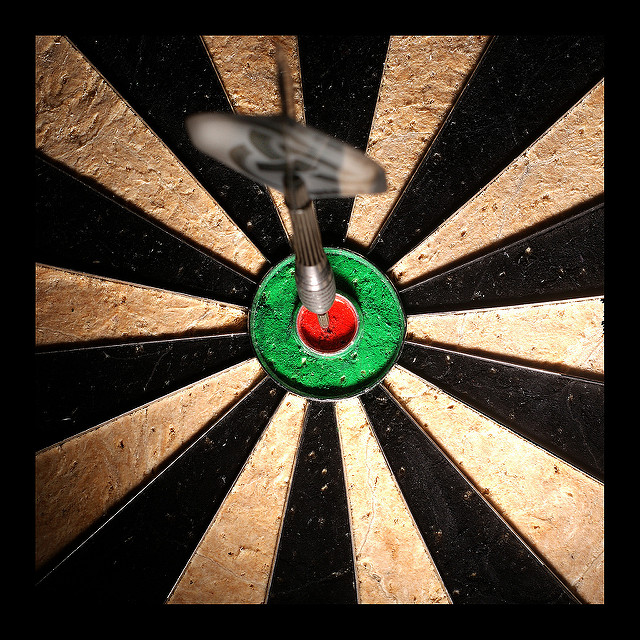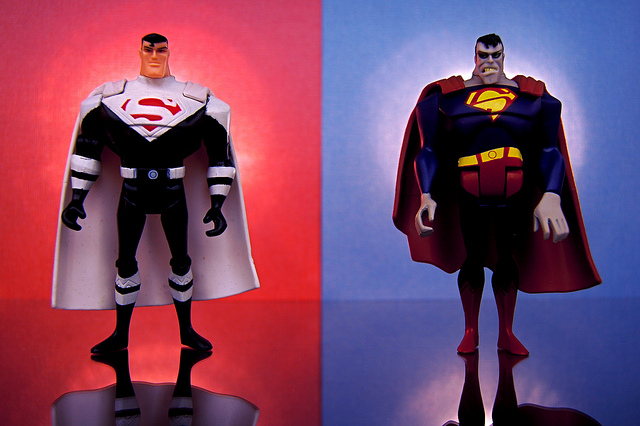Archive for the ‘Clarity’ Category
The Additive Manufacturing Maturity Model
 Additive Manufacturing (AM) is technology/product space with ever-increasing performance and an ever-increasing collection of products. There are many different physical principles used to add material and there are a range of part sizes that can be made ranging from micrometers to tens of meters. And there is an ever-increasing collection of materials that can be deposited from water soluble plastics to exotic metals to specialty ceramics.
Additive Manufacturing (AM) is technology/product space with ever-increasing performance and an ever-increasing collection of products. There are many different physical principles used to add material and there are a range of part sizes that can be made ranging from micrometers to tens of meters. And there is an ever-increasing collection of materials that can be deposited from water soluble plastics to exotic metals to specialty ceramics.
But AM tools and technologies don’t deliver value on their own. In order to deliver value, companies must deploy AM to solve problems and implement solutions. But where to start? What to do next? And how do you know when you’ve arrived?
To help with your AM journey, below a maturity model for AM. There are eight categories, each with descriptions of increasing levels of maturity. To start, baseline your company in the eight categories and then, once positioned, look to the higher levels of maturity for suggestions on how to move forward.
For a more refined calibration, a formal on-site assessment is available as well as a facilitated process to create and deploy an AM build-out plan. For information on on-site assessment and AM deployment, send me a note at mike@shipulski.com.
Execution
- Specify AM machine – There a many types of AM machines. Learn to choose the right machine.
- Justify AM machine – Define the problem to be solved and the benefit of solving it.
- Budget for AM machine – Find a budget and create a line item.
- Pay for machine – Choose the supplier and payment method – buy it, rent to own, credit card.
- Install machine – Choose location, provide necessary inputs and connectivity
- Create shapes/add material – Choose the right CAD system for the job, make the parts.
- Create support/service systems – Administer the job queue, change the consumables, maintenance.
- Security – Create a system for CAD files and part files to move securely throughout the organization.
- Standardize – Once the first machines are installed, converge on a small set of standard machines.
- Teach/Train – Create training material for running AM machine and creating shapes.
Solution
- Copy/Replace – Download a shape from the web and make a copy or replace a broken part.
- Adapt/Improve – Add a new feature or function, change color, improve performance.
- Create/Learn – Create something new, show your team, show your customers.
- Sell Products/Services – Sell high volume AM-produced products for a profit. (Stretch goal.)
Volume
- Make one part – Make one part and be done with it.
- Make five parts – Make a small number of parts and learn support material is a challenge.
- Make fifty parts – Make more than a handful of parts. Filament runs out, machines clog and jam.
- Make parts with a complete manufacturing system – This topic deserves a post all its own.
Complexity
- Make a single piece – Make one part.
- Make a multi-part assembly – Make multiple parts and fasten them together.
- Make a building block assembly – Make blocks that join to form an assembly larger than the build area.
- Consolidate – Redesign an assembly to consolidate multiple parts into fewer.
- Simplify – Redesign the consolidated assembly to eliminate features and simplify it.
Material
- Plastic – Low temperature plastic, multicolor plastics, high performance plastics.
- Metal – Low melting temperature with low conductivity, higher melting temps, higher conductivity
- Ceramics – common materials with standard binders, crazy materials with crazy binders.
- Hybrid – multiple types of plastics in a single part, multiple metals in one part, custom metal alloy.
- Incompatible materials – Think oil and water.
Scale
- 50 mm – Not too large and not too small. Fits the build area of medium-sized machine.
- 500 mm – Larger than the build area of medium-sized machine.
- 5 m – Requires a large machine or joining multiple parts in a building block way.
- 0.5 mm – Tiny parts, tiny machines, superior motion control and material control.
Organizational Breadth
- Individuals – Early adopters operate in isolation.
- Teams – Teams of early adopters gang together and spread the word.
- Functions – Functional groups band together to advance their trade.
- Supply Chain – Suppliers and customers work together to solve joint problems.
- Business Units – Whole business units spread AM throughout the body of their work.
- Company – Whole company adopts AM and deploys it broadly.
Strategic Importance
- Novelty – Early adopters think it’s cool and learn what AM can do.
- Point Solution – AM solves an important problem.
- Speed – AM speeds up the work.
- Profitability – AM improves profitability.
- Initiative – AM becomes an initiative and benefits are broadly multiplied.
- Competitive Advantage – AM generates growth and delivers on Vital Business Objectives (VBOs).
Image credit – Cheryl
Leadership isn’t binary, and that’s why judgement is important.
 100% of the people won’t like your new idea, even if it’s a really good one like the airplane, mayonnaise or air conditioning.
100% of the people won’t like your new idea, even if it’s a really good one like the airplane, mayonnaise or air conditioning.
I don’t know the right amount of conflict, but I know it’s not 0% or 100%.
If 100% is good, 110% isn’t better. Percentages don’t work that way.
100% alignment is not the best thing. Great things aren’t built on the back of consensus.
100% of the problems shouldn’t be solved. Sometimes it’s best to let the problem blossom into something that cannot be dismissed, denied or avoided.
Fitting in can be good, but not 100% of the time. Sometimes the people in power need to hear the truth, even if you know they’ll choke on it.
If the system is in the way, work the rule. Follow it 100%, follow it to the letter, follow it until it’s absurd. But, keep in mind the system isn’t in the way 100% of the time.
Following the process 100% eliminates intellectual diversity. And, as Darwin said, that leads to extinction. I think he was onto something.
Trying to fix 100% of the problems leads to dilution. Solve one at a time until you’re done.
The best tool isn’t best 100% of the time. Here’s a rule: If the work’s new, try a new tool. You can’t cut a board with a hammer.
I don’t know how frequently to make mistakes, but I know it’s not 0% or 100% of the time.
As a sport, leadership isn’t binary. That’s why we’re paid to use our good judgement.
Image credit – Joe Dyer
Learn in small batches, rinse and repeat.
 When the work is new, it can’t be defined and managed like work that has been done before.
When the work is new, it can’t be defined and managed like work that has been done before.
Sometimes there’s a tendency to spend months to define the market, the detailed specification and the project timeline and release the package as a tidal wave that floods the organization with new work. Instead, start with a high-level description of the market, a rough specification and the major project milestones, all of which will morph, grow and inform each other as the team learns. Instead of a big batch, think bite-sized installments that build on each other. Think straw-man that gets its flesh as the various organizations define their learning objectives and learn them.
Instead of target customer segments and idealized personas, define how the customers will interact with the new product or service. Use the storyboard format to capture sequence of events (what they do), the questions they ask themselves and how they know they’ve done it right. Make a storyboard for the top three to five most important activities the customers must do. There’s good learning just trying to decide on the top three to five activities, never mind the deep learning that comes when you try to capture real activities of real customers. [Hint – the best people to capture real customer activities are real customers.]
Instead of a detailed list of inputs and outputs, fill in the details of the storyboards. Create close-ups of the user interfaces and label the dials, buttons and screens. When done well, the required inputs and outputs bubble to the surface. And define the customer’s navigation path, as it defines the sequence of things and where the various inputs come to be and the various outputs need to be. What’s nice is learning by iteration can be done quickly since its done in the domain of whiteboards and markers.
Instead of defining everything, just define what’s new and declare everything else is the same as last time.
The specification for the first prototypes is to bring the storyboards to life and to show the prototypes to real customers. Refine and revise based on the learning, and rinse and repeat, as needed.
As the design migrates toward customer value and confidence builds, it’s then time to layer on the details and do a deep dive into the details – specs, test protocols, manufacturing, sales and distribution.
At early stages of innovation work, progress isn’t defined by activity, it’s defined by learning. And it can look like nothing meaningful is happening as there is a lot of thinking and quiet time mixed in with infrequent bursts active activity. But that’s what it takes to answer the big questions of the front end.
When in doubt, answer the big questions at the expense of the details. And to stay on track, revisit and refine the learning objectives. And to improve confidence, show it to real customers.
And rinse and repeat, as needed.
Image credit – Jason Samfield
To improve innovation, use fewer words.
 Everyone knows innovation is difficult, but there’s no best way to make it easier. And everyone knows there’s plenty of opportunities to make innovation more effective, but, again, there’s no best way. Clearly, there are ways to improve the process, and new tools can help, but the right process improvements depend on the existing process and the specific project. And it’s the same for tools – the next tool depends on the existing toolbox and the new work required by the project. With regard to tools and processes, the right next steps are not universal.
Everyone knows innovation is difficult, but there’s no best way to make it easier. And everyone knows there’s plenty of opportunities to make innovation more effective, but, again, there’s no best way. Clearly, there are ways to improve the process, and new tools can help, but the right process improvements depend on the existing process and the specific project. And it’s the same for tools – the next tool depends on the existing toolbox and the new work required by the project. With regard to tools and processes, the right next steps are not universal.
But with all companies’ innovation processes, there is a common factor – the innovation process is run by people. Regardless of process maturity or completeness, people run the process. And this fundamental cuts across language, geography and company culture. And it cuts across products, services, and business models. Like it or not, innovation is done by people.
At the highest level, innovation converts ideas into something customers value and delivers the value to them for a profit. At the front end, innovation is about ideas, in the middle, it’s about problems and at the back end, it’s about execution. At the front, people have ideas, define them, evaluate them and decide which ones to advance. In the middle, people define the problems and solve them. And at the back end, people define changes to existing business process and run the processes in a new way.
Tools are a specialized infrastructure that helps people run lower-level processes within the innovation framework. At the front, people have ideas about new tools, or how to use them in a new way, define the ideas, evaluate them, and decide which tools to advance. In the middle, people define problems with the tools and solve them. And at the back end, they run the new tools in new ways.
With innovation processes and tools, people choose the best ideas, people solve problems and people implement solutions.
In order to choose the best ideas, people must communicate the ideas to the decision makers in a clear, rich, nuanced way. The better the idea is communicated, the better the decision. But it’s difficult to communicate an idea, even when the idea is not new. For example, try to describe your business model using just words. And it’s more difficult when the idea is new. Try to describe a new (untested) business model using just your words. For me, words are not a good way to communicate new ideas.
Improved communication improves innovation. To improve communication of ideas, use fewer words. Draw a picture, create a cartoon, make a storyboard, or make a video. Let the decision maker ask questions of your visuals and respond with another cartoon, a modified storyboard or a new sketch. Repeat the process until the decision maker stops asking questions. Because communication is improved, the quality of the decision is improved.
Improved problem solving improves innovation. To improve problem-solving, improve problem definition (the understanding of problem definition.) Create a block diagram of the problem – with elements of the system represented by blocks and labeled with nouns, and with actions and information flow represented by arrows labeled with verbs. Or create a sketch of the customer caught in the act of experiencing the problem. Define the problem in time (when it happens) so it can be solved before, during or after. And in all cases, limit yourself to one page. Continue to modify the visuals until there’s a common definition of the problem (the words stop.) When the problem is defined and communicated in this way, the problem solves itself. Problem-solving is seven-eighths problem definition.
Improved execution improves innovation. To improve execution, improve clarity of the definition of success. And again, minimize the words. Draw a picture that defines success using charts or graphs and data. Create the axes and label them (don’t forget the units of measure). Include data from the baseline product (or process) and define the minimum performance criterion in red. And add the sample size (number of tests.) Use one page for each definition of success and sequence them in order of importance. Start with the work that has never been done before. And to go deeper, define the test protocol used to create the data.
For a new business model, the one-page picture could be a process diagram with new blocks for new customers or partners or new arrows for new information flows. There could be time requirements (response time) or throughput requirements (units per month). Or it could be a series of sketches of new deliverables provided by the business model, each with clearly defined criteria to judge success. When communicated clearly to the teams, definitions of success are beacons of light that guide the boats as the tide pulls them through the project or when uncharted rocks suddenly appear to starboard.
Innovation demands communication and communication demands mechanisms. In the domain of uncertainty, words are not the best communicators. Create visual communication mechanisms that distill and converge on a common understanding.
A picture isn’t worth a thousand words, it gets rid of a thousand.
Image credit – Michael Coghlan
The Duplicitous Relationship Between Time and Money
 If you had a choice to make an extra year’s salary or live an extra year, which would you choose? If you had a choice to make an extra month’s salary or live an extra month, make the same choice? What about the trade between a week’s pay and a week of life? Does anything change when it’s a choice between ten years of salary and ten years of life? Does this thought experiment change anything for you? If not, no worries. It was a low-cost experiment.
If you had a choice to make an extra year’s salary or live an extra year, which would you choose? If you had a choice to make an extra month’s salary or live an extra month, make the same choice? What about the trade between a week’s pay and a week of life? Does anything change when it’s a choice between ten years of salary and ten years of life? Does this thought experiment change anything for you? If not, no worries. It was a low-cost experiment.
If you decided you had enough money, how would you change your behavior? Would you spend more time with your kids? Would you take the time to decompress and enjoy what you have? Or would you spend more money so no longer had enough? What if next week you pretend you have enough money? Would things change? Is there a downside to spending more time with your family next week? Why not try it?
If every day you reminded yourself your lifespan was finite, would you live differently? If you reminded yourself every morning for the next week, would things change? It’s a low-cost experiment, and only the first two mornings are scary. The experiment is free. Why not try?
What if you decided you didn’t want a promotion? Would you work differently? Would you use more judgment because the cost of failure is lower? Would you take more initiative? Would you say no more often? Or would you say yes more often? Would you choose to work on different projects? Why not try it for a week? Who knows, you may get a promotion.
What if you decided you had enough stuff? What would you do with the extra money? Would give some to charity? Would you save up and buy more stuff? For the next week, why not remove one thing from your house and recycle it or give it away? You may teach yourself you have too much stuff; you may teach yourself your house looks better when it’s less cluttered, or you may feel good that your gift helped someone who didn’t have enough. There’s little downside to more pocket change, a decluttered house and helping others. Why not try it next week?
Every day we make trades between time and money, but we make them in a below-the-water-level way. And every day we choose between having enough or not, and, again, we make these choices in a less-than-fully-conscious way. But these choices are far too important to make lightly.
Why not make some time every day to quiet yourself so you can be more aware of the day’s decisions? It’s a low-cost experiment that could bring more clarity to your decision-making. Why not try it for a week?
image credit – Tax Credits
Improving What Is and Creating What Isn’t
There are two domains – what is and what isn’t. We’re most comfortable in what is and we don’t know much about what isn’t. Neither domain is best and you can’t have one without the other. Sometimes it’s best to swim in what is and other times it’s better to splash around in what isn’t. Though we want them, there are no hard and fast rules when to swim and when to splash.
Improvement lives in the domain of what is. If you’re running a Six Sigma project, a lean project or a continuous improvement program you’re knee deep in what is. Measure, analyze, improve, and control what is. Walk out to the production floor, count the machines, people and defects, measure the cycle time and eliminate the wasteful activities. Define the current state and continually (and incrementally) improve what is. Clear, unambiguous, measurable, analytical, rational.
The close cousins creativity and innovation live in the domain of what isn’t. They don’t see what is, they only see gaps, gulfs and gullies. They are drawn to the black hole of what’s missing. They define things in terms of difference. They care about the negative, not the image. They live in the Bizarro world where strength is weakness and far less is better than less. Unclear, ambiguous, intuitive, irrational.
What is – productivity, utilization, standard work. What isn’t – imagination, unstructured time, daydreaming. Predictable – what is. Unknowable – what isn’t.
In the world of what is, it’s best to hire for experience. What worked last time will work this time. The knowledge of the past is all powerful. In the world of what isn’t, it’s best to hire young people that know more than you do. They know the latest technology you’ve never heard of and they know its limitations.
Improving what is pays the bills while creating what isn’t fumbles to find the future. But when what is runs out of gas, what isn’t rides to the rescue and refuels. Neither domain is better, and neither can survive without the other.
The magic question – what’s the best way to allocate resources between the domains? The unsatisfying answer – it depends. And the sextant to navigate the dependencies – good judgement.
Image credit – JD Hancock
The Causes and Conditions for Innovation
 Everyone wants to do more innovation. But how? To figure out what’s going on with their innovation programs, companies spend a lot of time to put projects into buckets but this generates nothing but arguments about whether projects are disruptive, radical innovation, discontinuous, or not. Such a waste of energy and such a source of conflict. Truth is, labels don’t matter. The only thing that matters is if the projects, as a collection, meet corporate growth objectives. Sure, there should be a short-medium-long look at the projects, but, for the three time horizons the question is the same – Do the projects meet the company’s growth objectives?
Everyone wants to do more innovation. But how? To figure out what’s going on with their innovation programs, companies spend a lot of time to put projects into buckets but this generates nothing but arguments about whether projects are disruptive, radical innovation, discontinuous, or not. Such a waste of energy and such a source of conflict. Truth is, labels don’t matter. The only thing that matters is if the projects, as a collection, meet corporate growth objectives. Sure, there should be a short-medium-long look at the projects, but, for the three time horizons the question is the same – Do the projects meet the company’s growth objectives?
To create the causes and conditions for innovation, start with a clear growth objective by geography. Innovation must be measured in dollars.
Good judgement is required to decide if a project is worthy of resources. The incremental sales estimates are easy to put together. The difficult parts are deciding if there’s enough sizzle to cause customers to buy and deciding if the company has the chops to do the work. The difficulty isn’t with the caliber of judgement, rather it’s insufficient information provided to the people that must use their good judgement. In shorth, there is poor clarity on what the projects are about. Any description of the projects blurry and done at a level of abstraction that’s too high. Good judgement can’t be used when the picture is snowy, nor can it be effective with a flyby made in the stratosphere.
To create the causes and conditions for innovation, demand clarity and bedrock-level understanding.
To guarantee clarity and depth, use the framework of novel, useful, successful. Give the teams a tight requirement for clarity and depth and demand they meet it. For each project, ask – What is the novelty? How is it useful? When the project is completed, how will everyone be successful?
A project must deliver novelty and the project leader must be able to define it on one page. The best way to do this is to create physical (functional) model of the state-of-the-art system and modify it with the newness created by the project (novelty called out in red). This model comes in the form of boxes that describe the system elements (simple nouns) and arrows that define the actions (simple verbs). Think hammer (box – simple noun) hits (arrow -simple verb) nail (box – simple noun) as the state-of-the-art system and the novelty in red – a thumb protector (box) that blocks (arrow) hammer (box). The project delivers a novel thumb protector that prevents a smashed thumb. The novelty delivered by the project is clear, but does it pass the usefulness test?
To create the causes and conditions for innovation, demand a one-page functional model that defines and distills down to bedrock level the novelty created by the project. And to help the project teams do it, hire a good teach teacher and give them the tools, time and training.
The novelty delivered by a project must be useful and the project leader must clearly define the usefulness on one page. The best way to do this is with a one page hand sketch showing the customer actively using the novelty. In a jobs-to-be-done way, the sketch must define where, when and how the customer will realize the usefulness. And to force distillation blinding, demand they use a fat, felt tip marker. With this clarity, leaders with good judgement can use their judgement effectively. Good questions flow freely. Does every user of a hammer need this? Can a left-handed customer use the thumb guard? How does it stay on? Doesn’t it get in the way? Where do they put it when they’re done? Do they wear it all the time? With this clarity, the questions are so good there is no escape. If there are holes they will be uncovered.
To create the causes and conditions for innovation, demand a one-page hand sketch of the customer demonstrating the useful novelty.
To be successful, the useful novelty must be sufficiently meaningful that customers pay money for it. The standard revenue projections are presented, but, because there is deep clarity on the novelty and usefulness, there is enough context for good judgement to be effective. What fraction of hammer users hit their thumbs? How often? Don’t they smash their fingers too? Why no finger protection? Because of the clarity, there is no escape.
To create the causes and conditions, use the deep clarity to push hard on buying decisions and revenue projections.
The novel, useful, successful framework is a straightforward way to decide if the project portfolio will meet growth objectives. It demands a clear understanding of the newness created by the project but, in return, provides context needed to use good judgement. In that way, because projects cannot start without passing the usefulness and successfulness tests, resources are not allocated to unworthy projects.
But while clarity and this level of depth is a good start, it’s not enough. It’s time for a deeper dive. The project must distill the novelty into a conflict diagram, another one-pager like the others, but deeper. Like problem definition on steroids, a conflict must be defined in space – between two things (thumb and face of hammer head) – and time (just as the hammer hits thumb). With that, leaders can ask before-during-after questions. Why not break the conflict before it happens by making a holding mechanism that keeps the thumb out of the strike zone? Are you sure you want to solve it during the conflict time (when the hammer hits thumb)? Why not solve it after the fact by selling ice packs for their swollen thumbs?
But, more on the conflict domain at another time.
For now, use novel, useful, successful to stop bad projects and start good ones.
Image credit – Natashi Jay
Understanding the trajectory of the competitive landscape
 If you want to gain ground on your competition you’ve first got to know where things stand. Where are their advantages? Where are your advantages? Where is there parity? To quickly understand the situations there are three tricks: stay at a high level, represent the situation in a clear way and, where possible, use public information from their website.
If you want to gain ground on your competition you’ve first got to know where things stand. Where are their advantages? Where are your advantages? Where is there parity? To quickly understand the situations there are three tricks: stay at a high level, represent the situation in a clear way and, where possible, use public information from their website.
A side-by-side comparison of the two companies’ products is the way to start. Create a common set of axes with price running south to north and performance (or output) running west to east. Make two copies and position them side-by-side on the page – yours on the left and theirs directly opposite on the right. Go to their website (and yours) and make a list of every product, its price and its output. (For prices of their products you may have to engage your sales team and your customers.) For each of your products place a symbol (the company logo) on your performance-price landscape and do the same for their products on their landscape. It’s now clear who has the most products, where their portfolio outflanks yours and where you outflank them. The clarity and simplicity will help everyone see things as they are – there may be angst but there will be no confusion and no disagreement. The picture is clear. But it’s static.
The areal differences define the gaps to close and the advantages to exploit. Now it’s time to define the momentum and trajectories of the portfolios to add a dynamic element. For your most recent product launch add a one next to its logo, for the second most recent add a two and for the third add three. These three regions of your portfolio are your most recent focus areas. This is your trajectory and this is where you have momentum. Extend and arrow in the direction of your trajectory. If you stay the course, this is where your portfolio will add mass. Do the same for your competitor and compare arrows. You know have a glimpse into the future. Are your arrows pointing in the same directions as theirs? Are they located in the same regions? How would feel if both companies continued on their trajectories? With this addition you have glimpse into the stay-the-course future. But will they stay the course? For that you need to look at the patent landscape.
Do a patent search on their patents and applications over the previous year and represent each with its most descriptive figure. Write a short thematic description for each, group like themes and draw a circle around them. Mark the circle with a one to denote last year’s patents. Repeat the process for two years ago and three years ago and mark each circle accordingly. Now you have objective evidence of the future. You know where they have been working and you know where they want to go. You have more than a glimpse into the future. You know their preferred trajectories. Reconcile their preferred trajectories with their price-performance landscapes and arrows 1, 2 and 3. If their preferred trajectories line up with their product momentum, it’s business as usual for them. If they contradict, they are playing a different game. And because it takes several years for patent applications to publish, they’ve been playing a new game for a while now.
Repeat the process for your patent landscape and flop it onto your performance-price landscape. I’m not sure what you’ll see, but you’ll know it when you see it. Then, compare yours with theirs and you’ll know what the competitive landscape will look like in three years. You may like what you see, or not. But, the picture will be clear. There may be discomfort, but there can be no arguments.
This process can also be used in the acquisition process to get a clear picture a company’s future state. In that way you can get a calibrated view three years into the future and use your crystal ball to adjust your offer price accordingly.
Image credit – Rob Ellis
Good teachers don’t always look like teachers.
 When you’re laying in your camping tent dead tired and wanting for sleep the last thing you want is a rouge mosquito that dive-bombs you continuously throughout the night. With each sortie, it pushes on your expectations of how things should be. This little creature, so small and so powerless, becomes powerful enough to ruin a good night’s sleep. But, really, the mosquito itself doesn’t become powerful at all. You give the mosquito its power, power generated by a mismatch between what you want (sleep) and what is (a little bug flying around). This mismatch causes you assign intent to the mosquito which leads you to tell yourself a story of an insect on a singular mission to upset you. Truth is, the mosquito is on a mission, a mission to teach you the self destructive power of making little things into big things. The mosquito is your teacher.
When you’re laying in your camping tent dead tired and wanting for sleep the last thing you want is a rouge mosquito that dive-bombs you continuously throughout the night. With each sortie, it pushes on your expectations of how things should be. This little creature, so small and so powerless, becomes powerful enough to ruin a good night’s sleep. But, really, the mosquito itself doesn’t become powerful at all. You give the mosquito its power, power generated by a mismatch between what you want (sleep) and what is (a little bug flying around). This mismatch causes you assign intent to the mosquito which leads you to tell yourself a story of an insect on a singular mission to upset you. Truth is, the mosquito is on a mission, a mission to teach you the self destructive power of making little things into big things. The mosquito is your teacher.
When it’s time to learn, the best teachers show up as if on command. When things have been going well for a while and you’re getting a little stale, your supportive boss contracts yellow fever to make room for your teacher. Your teacher, in the form of your new boss, shows up the first day with all the wrong answers and the strong desire to standardize on them. Your teacher challenges you to look inside for the motivation to elevate your game and demands you bring creativity and clarity of unrivaled proportions. Your terrible boss doesn’t know enough to ask for the right things so you end up solving oblique problems that on the surface seem meaningless. But, because you had to solve a new problem in a new way you come up with a variant that ends up transforming your mainstream business. Your terrible boss is your teacher.
Due to an economic slowdown, the multinational you work for eliminates your division and you lose your job. As you search for a job and collect unemployment you have a little time so you start a crazy side project. It doesn’t matter if it works because it’s just a diversion from your miserable situation, so you try it. And, as it turns out the impossible is actually possible and you start a whole new business on your prototype. Your miserable situation is your teacher.
Instead of getting angry at your new situation and feeling terrible about yourself, embrace the newness and let it be your teacher. Be humble, watch it unfold and see where it takes you. Use it to see yourself differently. Use it to challenge your assumptions.
And, most importantly, as you take the wild ride, hold on to your hearts best intention.
Image credit – Andreas.
Make it work.
 If you think something can’t be done, it won’t get done. And if you think it may be possible, or is possible, it may get done. Those are the rules.
If you think something can’t be done, it won’t get done. And if you think it may be possible, or is possible, it may get done. Those are the rules.
If an expert says it will work, it will work. If they say it won’t work, it might. Experts can tell you will work, but can’t tell you what won’t.
If your boss tells you it won’t work, it might. Give it a try. It will be fun if it works.
If you can’t make it work, make it worse and then do the opposite.
If you can’t explain the problem to your young kids, you don’t understand the situation and you won’t make it work.
If something didn’t work ten years ago, it may work now. Technology is better and we’re smarter. More likely it would have worked ten years ago if they ran more than one crude experiment before they gave up.
If you can’t draw a one page sketch of the problem, it may never work.
If you can’t make it work, put it down for three days. Your brain may make it work while you’re sleeping.
If you don’t know the problem, you can’t make it work. Be sure you’re trying to solve the right problem.
If your boss tells you it will work, it might. If they tell you how to make it work, let them do it.
If none of your attempts have been fruitful and you’re out of tricks, purposely make one performance attribute worse to free up design space. That may work.
If you don’t know when the problem occurs, you don’t know much. Your solutions won’t work.
If you tried everything and nothing worked, ask someone for help whose specialty in an unrelated area. They may have made it work in a different domain.
If you think everyone in the group understands the problem the same way, they don’t. There’s no way they’ll agree on the best way to make it work. Don’t wait for consensus.
If you don’t try, that’s the only way to guarantee it won’t work.
Image credit – Simon Greig
Moving Away from Best Practices
 If the work is new, there is no best practice.
If the work is new, there is no best practice.
When you read the best books you’ll understand what worked in situations that are different than yours. When you read the case studies you’ll understand how one company succeeded in a way that won’t work in yours. The best practices in the literature worked in a different situation, in a different time and a under different cultural framework. They won’t work best for you.
Just because a practice worked last time doesn’t mean it’s a best practice this time. More strongly, just because it worked last time doesn’t mean it was best last time. There may have been a better way.
When a problem has high urgency it should be solved in a fast way, but if urgency is low, the problem should be solved in an efficient way. Which way is best? If the consequences of getting it wrong are severe, analyses and parallel solutions are skillful, but if it’s not terribly important to get it right, a lower cost way is better. But is either the best way?
The best practices found in books are usually described a high level of abstraction using action words, block diagrams and arrows. And when described at such a high level, they’re not actionable. You may know all the major steps, but you won’t know how each step should be done. And if the detail is provided, the context of your situation is different and the prescriptive steps don’t apply.
Instead of best practices, think effective practices. Effective because the people doing the work can do it effectively. Effective because it fits with the capability and capacity of the people doing the work. Effective because it meshes with existing processes and projects. Effective because it fits with your budget, timeline and risk profile. Effective because it fits with your company values.
Because all our systems are people systems, there are no best practices.

 Mike Shipulski
Mike Shipulski